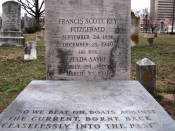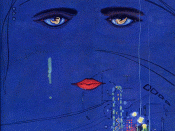A successful piece of social commentary selects an issue (or feature) of a society and identifies a series of aspects that contribute to that society. By doing this, the author raises the awareness amongst readers and makes them reconsider the accepted state of affairs and challenges a position held on those certain issues. F. Scott Fitzgerald's The Great Gatsby is a severe indictment on American society in the 1920s, with particular emphasis on the disintegration of the American dream corrupted by materialism of the upper class, the moral decay and carelessness of the wealthy. The Great Gatsby is successful in that his comments are a readily accessible feature of his book, through the use of contrast and symbolism. The web article "Miss Betty Bowers" criticizes modern day celebrities and the Catholic Church through the use of exaggeration, puns, language and tone. The movie American Beauty is a strong criticism on the family structure and values of society in the 1990s.
. Both "Miss Betty Bowers" and American Beauty are both extremely successful in making social comments by using satire to deliver their messages.
"The Great Gatsby" reflects the social attitudes of the time and positions its characters as symbols of the 1920s social trends. It includes comments on the underlying motives of the American dream, the excesses enjoyed purely for the sake of hedonistic fulfillment and the acceptance of corruption in society. The American Dream, in this novel is presented throughout as a materialistic dream focused only on acquiring wealth and possession. Fitzgerald successfully uses contrast between East Egg and West Egg to represent these values. The West Egg represents the "new money", portrayed as being vulgar and lacking in social taste. On the other hand, the East egg represents the old money and possesses grace, taste and elegance.


